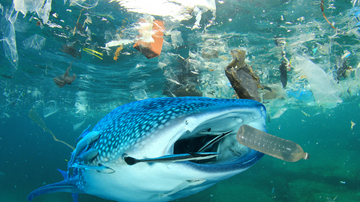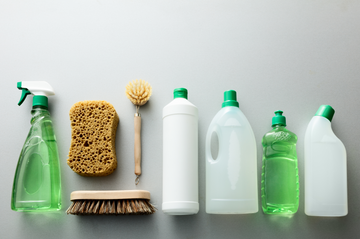Microplastics, tiny plastic particles less than 5mm in size, have spread to every corner of the environment, from the deepest oceans to the air we breathe. These particles originate from the breakdown of larger plastic products and the shedding of synthetic textiles. Alarming research has found microplastics in human and animal tissues, raising concerns about their impact on health, highlighting the urgent need for further investigation and action.
Here are 10 eye-opening facts about microplastics that uncover their hidden dangers and the shocking extent of their presence.
1. Microplastics Can Be Found Everywhere - Even the Remote Arctic Ice

Microplastics have reached every environment on Earth, even the most remote and untouched places. Research has found these tiny particles in Arctic ice, showing that no ecosystem is safe from plastic pollution. This highlights the global scope of the microplastics issue, impacting ecosystems everywhere, including the most isolated and pristine areas of our planet.
2. Oceans Are a Major Sink for Microplastics
Microplastics can be found in our oceans from the surface waters to the deepest seabeds. They originate from the breakdown of larger plastic debris and are spread by ocean currents, winds, and other natural forces. Once in the ocean, microplastics are ingested by marine organisms, from plankton to larger fish, posing a serious threat to marine ecosystems and to human health through seafood consumption.
3. Microplastics are Hidden in the Food You Eat Daily - Even in Fruits and Vegetables
When it comes to microplastic in food, we are not only talking about the food eaten from plastic container with plastic cutlery, drinking bottled water, but raw food itself can contain alarming amounts of plastic. According to a study 90% of animal and vegetable protein samples tested positive for microplastics, Yes, neither vegetarians can escape, based on a research conducted in 2021. If the plastic is small enough, fruits and vegetables can absorb microplastics through their root systems and transfer those chemical bits to the plant’s stems, leaves, seeds and fruit.
4. Top Consumers Ingest Microplastics Equivalent to Three Credit Cards Each Month

South-east Asian countries such as Malaysia, Indonesia and the Philippines ingest the most microplastics among 109 countries, according to a study by Cornell University researchers.
Indonesians, the top consumers of microplastics, were found to ingest about 15g of microplastics per month – equivalent to three credit cards – with the majority of plastic particles coming from aquatic sources such as fish and seafood.
5. We Inhale Millions of Microplastic Particles Daily
In addition to ingesting microplastics through food and water, you also breathe them in. Plastic textile fibers, which now make up about 16% of global plastic production, break down into tiny airborne particles. These microplastics, present both indoors and outdoors, can be inhaled, with some remaining in the lungs and potentially causing inflammation. Industrial emissions further increase airborne microplastics, especially in regions like Southeast Asia, where people may inhale up to 2.8 million particles daily, far more than in other areas.
6. Microplastics Have Been Found in Humans

Microplastics have been detected in various parts of the human body, including the lungs, placenta, breast milk, and blood. However, the impact of these particles on human organs and overall health is still being explored. A recent study from March 2024 revealed that individuals with microplastics or nanoplastics in the arteries of their neck were twice as likely to suffer a heart attack, stroke, or die from any cause within the next three years compared to those without these particles.
7. Microplastics Could Negatively Impact Sperm Count
Researchers at the University of New Mexico analyzed 47 canine and 23 human testicle samples, finding microplastic contamination in every one. The most common plastic identified was polyethylene, frequently used in plastic bags and bottles. The study also observed that dogs with higher levels of microplastic contamination had lower sperm counts. However, further research is necessary to determine if microplastics are directly responsible for the reduction in sperm counts.
8. Microplastics Were Detected in Human Stool
A study examined 8 human stool samples looking for microplastics, and each sample was positive. A median of 20 microplastics per 10 g of human stool were identified. Overall, 9 plastic types were detected, with polypropylene (most commonly used in plastic packaging) and polyethylene terephthalate (PET - used for bottled drinks) being the most abundant.
9. Microplastics are Present in Everyday Items

Microplastics are hidden in many everyday items we use without a second thought. Clothes made of synthetic materials shed microplastics with every wash. Tea bags can release tiny plastic particles into your drink. Nail polish, toothpaste, glitter, sponges, and wet wipes are just a few more common items that contribute to the spread of microplastics in our environment. The list keeps growing, showing how pervasive these tiny pollutants have become in our daily lives.
10. You Can Still Reduce Your Exposure to Microplastics
To end this alarming blog post in a positive tone, let's highlight that there are lots of simple, every-day tips and tricks which help you reduce your exposure to microplastics. Read our next blog post to find out about them and start living a healthier life!








